Peas
1. Garden peas
Snow peas, sugar snaps and garden peas are all members of the Fabaceae (legume) family. They help to ‘fix’ nitrogen in your soil in a form your plants can easily take up, with the help of bacteria around the roots. These soil bacteria convert nitrogen from the air into plant food.
There are three main types of edible peas (Pisum sativum). Shelling or podded peas, snow peas and sugar snaps. These are all delicious and nutritious.
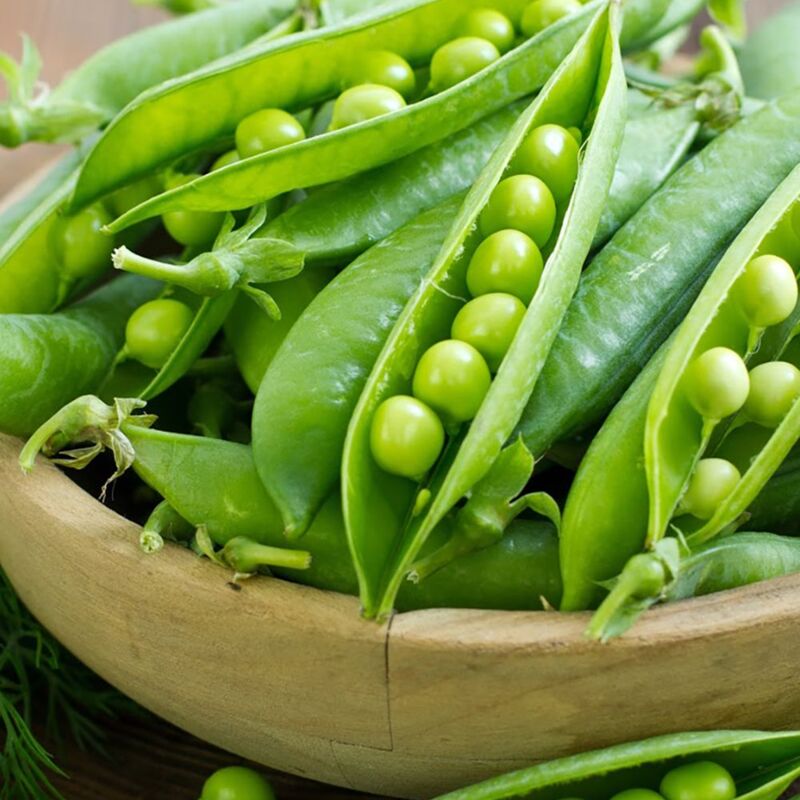
Shelling
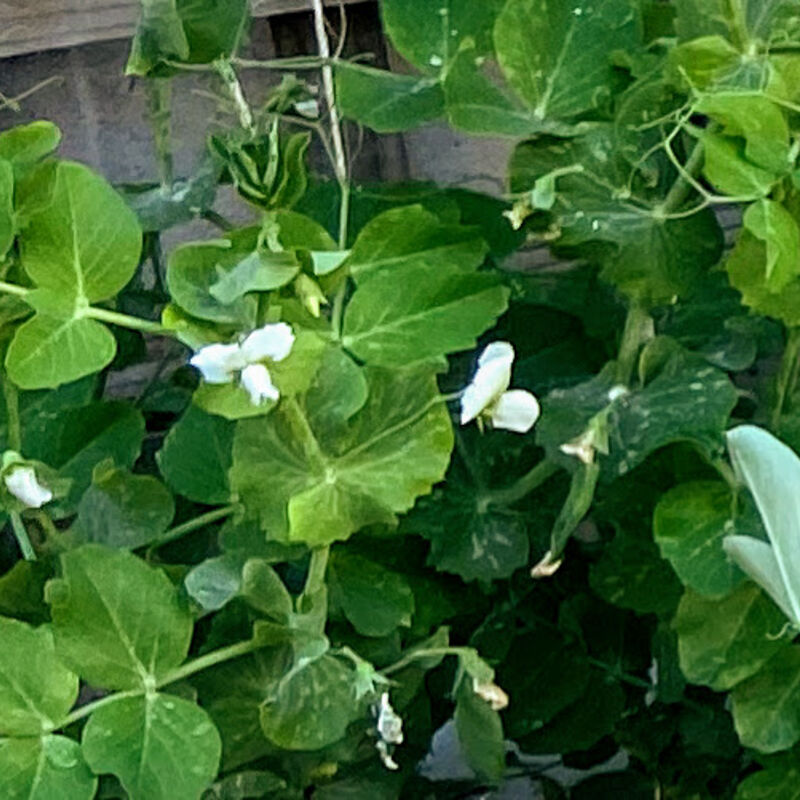
Snow
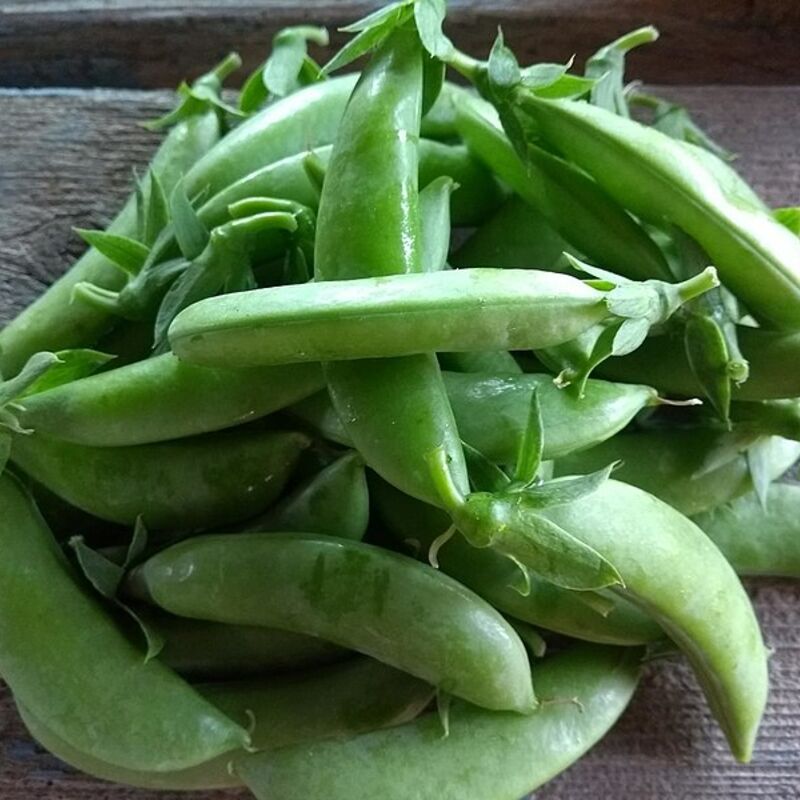
Sugar-snap
Sugar peas
Sugar peas or edible-pod peas Frence: pois mange-tout, "eat-all pea"), lack the tough membrane inside the pod wall and have tender edible pods. There are two main types:
- Snow peas have flat pods with thin pod walls. Pods and seeds are eaten when they are very young.
- Snap peas or sugar snap peas have rounded pods with thick pod walls. Pods and seeds are eaten before maturity.
2. Field peas or "dry peas"
Field peas are marketed as a dry, shelled product for either human or livestock food, unlike the garden pea, which is marketed as a fresh or canned vegetable.
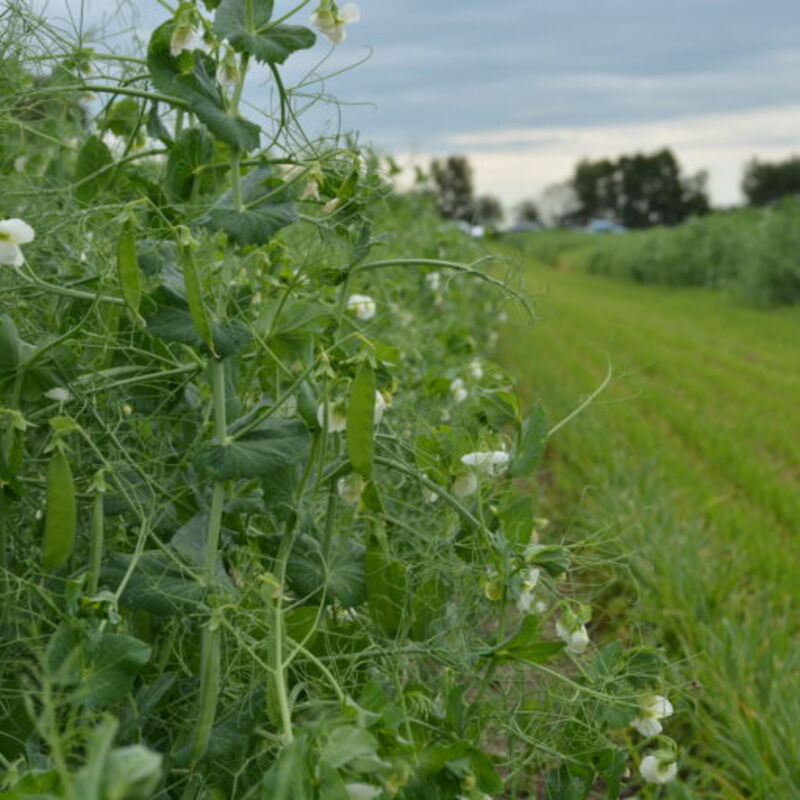
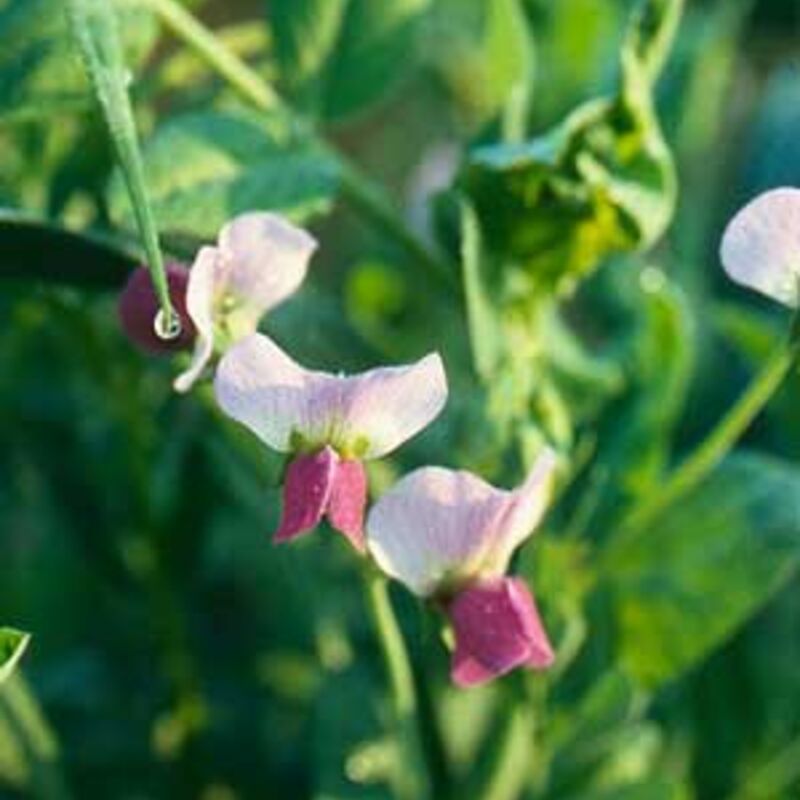
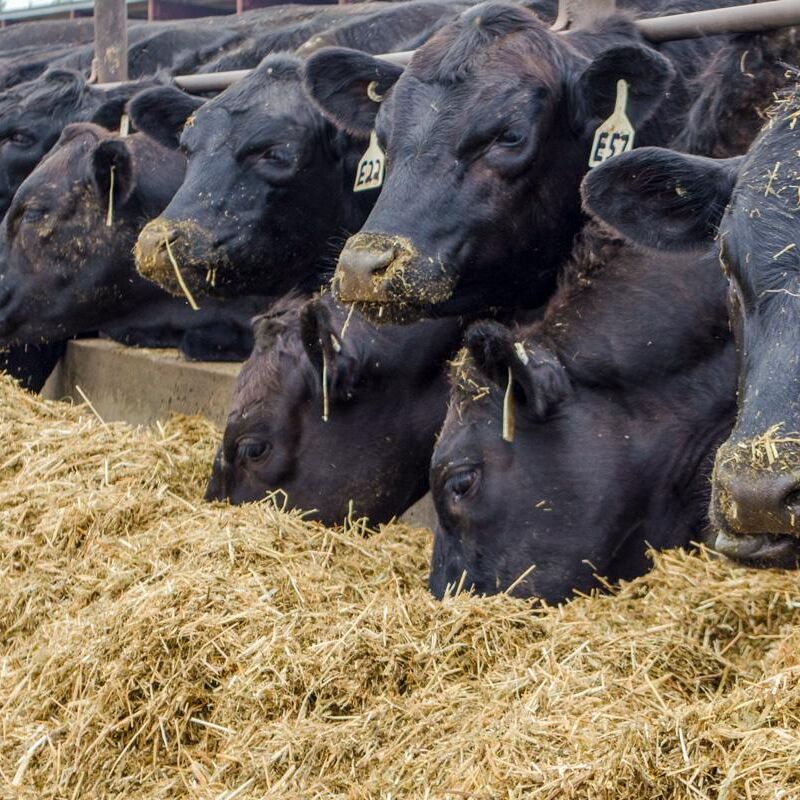
The field pea is a type of pea sometimes called P. sativum subsp. arvense (L.) Asch.
It is also known as dun (grey-brown) pea, Kapucijner pea, or Austrian winter pea, and is one of the oldest domesticated crops, cultivated for at least 7,000 years.
Peas love cool, frost-free growing conditions. They suit cold climates/cool seasons. Peas will grow, develop flowers and fruit in about 10-14 weeks, depending on the variety. Peas can take up to 3 weeks to mature from flower to pod but need staking or a trellis for support as they grow.
Peas are low maintenance, easy plants to grow. After seeds germinate, plants usually only need watering, support and harvesting.
Peas like well-drained moist organic soils and a soil pH 6.0-7.5.
Sugar snap peas
Sugar snap peas are eaten and all and flourish in cooler temperatures and can be planted just before the onset of spring. Even young plants will be hearty enough to survive one or two minor frosts in the interim.
Plants should be situated somewhere where they can get about 6 hours of sun exposure per day. However, they'll also do just fine in partial shade.
The soil should have a high nutrient content and be loose enough to encourage proper drainage and runoff after heavy rain or weekly watering.
To ventilate the soil, use a hand aerator or similar tool to punch a series of holes in the topsoil around the pea plant and add an inoculant to the soil to promote healthy growth.
There are several different varieties of sugar snap peas, including bushing types that grow in low, leafy clusters, and vining types that send up vertical stalks available in gardening centres or plant nursery.
In a small home garden, a vining type is better since these grow more upright, and they'll take up less overall space.
Shelling peas (Pisum sativum)
Shelling peas are popular vegetable garden plants harvested in the spring and also known as English or garden peas. They are flavorful legumes that can be eaten plain in home-cooked side dishes or incorporated into more complex fare like pasta primavera or pancetta.
Shelling pea plants are unique in producing edible seeds and are easy to grow, requiring little intervention.
However, unlike sugar or snap peas, which have crisp, easy-to-chew pods, shelling peas have tough, stringy pods which must be removed before cooking.
Cultivation
Shelling peas require nutritious, well-draining soil with a pH of 5.5 to 6.8 and full or partial sun.
If soil is too acidic, add lime a few months before planting. If it is too alkaline, add rock sulfur.
Peas do well in raised beds, and the seeds should be sown in the early spring, as soon as the soil is workable, to prevent pea plants from growing during hot weather.
Peas grow best at temperatures of 45 to 70 degrees Fahrenheit, but they are hardy and can be planted before the last frost.
Dampen the dried seeds before planting by either soaking them in water for 24 hours or letting them germinate between sheets of wet paper towels. Place no more than ten seeds on a damp paper towel, then fold it and seal it inside a plastic bag. Store the bag at room temperature for one week.
The seeds should be planted in rows 2 inches apart and 1 to 2 inches deep into the soil. For best results, plant two seeds into each hole and thin out the weaker seedling later.
The plants will require trellising and should be kept moist. but not soaked by watering regularly. Weed around shelling pea plants and reapply mulch once the plants begin to grow. Harvest peas after 60 to 70 days, once pods grow full.
Companion planting
Avoid planting peas in the same container or near garlic, onions, chives and spring onions. These plants tend to compete and stunt plant growth. I found this true in the 20/21summer season and had the same result for beans!
Containers
Containers should be at least 12 inches (30 cm) wide by 12 inches (30 cm) deep to accommodate the expanding root system.
Plant the seeds in 1 inch (2.5 cm) of soil, keeping each seed about 5 inches (13 cm) apart and pressing them gently into the soil with the tip of a finger, replacing the soil and tamping it down lightly to compact it
Trellises are needed to support vining varieties. Even something as simple as a tall stake or lattice will improve your vining snap peas' chances during the critical early stages of growth.
Water pea plants regularly, but not too much, irrigating just enough water to thoroughly wet the uppermost layer of soil without allowing it to get too soggy.
The goal is to keep the soil from drying out. Overwatering can stall growth or cause more serious issues like root rot, which could kill the plants.
Pests and diseases
Watch out for thrips, mites, aphids, cutworms, root-knot nematodes and fungal diseases. The organic strategies I use for healthy peas:
Plant disease-resistant varieties.
Practice crop rotation.
Space plants adequately.
Add compost and organic soil conditioners seasonally (rock minerals and complete organic fertilizers).
Apply liquid seaweed as a foliar spray on warm sunny days to strengthen plants and build resistance to disease.
Sowing early in the season may also prevent pests from affecting growth and production.
Feed your SOIL for healthy peas
Different pests like to feed on the leaves and pods of flowering pea plants, including pea moth caterpillars, slugs, and cucumber beetles. They can be picked off by hand or by mixing freshwater with a bit of vegetable oil and a few drops of mild liquid detergent in a spray bottle and blasting the bugs whenever they pop up.
While sugar snap peas are robust plants, some species are susceptible to infections like Fusarium wilt, along with rot, blights, and mildew. Covering the soil with a thick layer of organic matter and aerating it regularly should be enough to keep these conditions from occurring
Pruning
To keep the plant healthy and free up room for new pods, resulting in a more productive harvest, remove drooping, shrivelled, or overly-ripe snap peas and inspecting plants every few days to check for dead and dying offshoots.
Harvesting
It takes somewhere in the neighbourhood of 2-3 months for both bushing and vining varieties of snap peas to produce edible pods. However, it's alright to begin picking them at any point, provided that the pods are fully formed.
Younger plants will be delicate and tender, while more mature ones will fatten up and offer the satisfying crunch for which they're known and loved.
Once the pods have grown fat and firm, pluck them from the vine by hand. A fully-grown snap pea will be somewhere between 1–2 inches (2.5–5.1 cm) long, with plump, round peas that are visible from outside the shell.
Place the gathered pods in a paper or plastic bag and stash them away in the crisper drawer or on one of the bottom shelves of a fridge. When kept cool, they can last for up to two weeks. However, they'll be best when prepared —either cooked or eaten raw—right away
Avoid storing your snap peas at room temperature. Warm surroundings will cause their natural sugars to break down quickly, leaving them limp and flavourless.
Try freezing the peas in an airtight Ziploc bag instead to enjoy them in the coming weeks.
Culinary
The average pea weighs between 0.1 and 0.36 grams. The immature peas (and in snow peas, the tender pod) are used as a vegetable, fresh, frozen or canned; varieties of the species typically called field peas are grown to produce dry peas like the split shelled from a matured pod. These are the basis of peas porridge and pea soup, staples of medieval cuisine; in Europe, consuming fresh immature green peas was an innovation of early modern cuisine.
Peas are low in calories but are packed with antioxidants and anti-inflammatory agents. Peas are also high in micro-nutrients, vitamins, fibre, protein and minerals
Best eaten raw and straight off the plant before their natural sugars turn to starch and lose their sweet flavour.